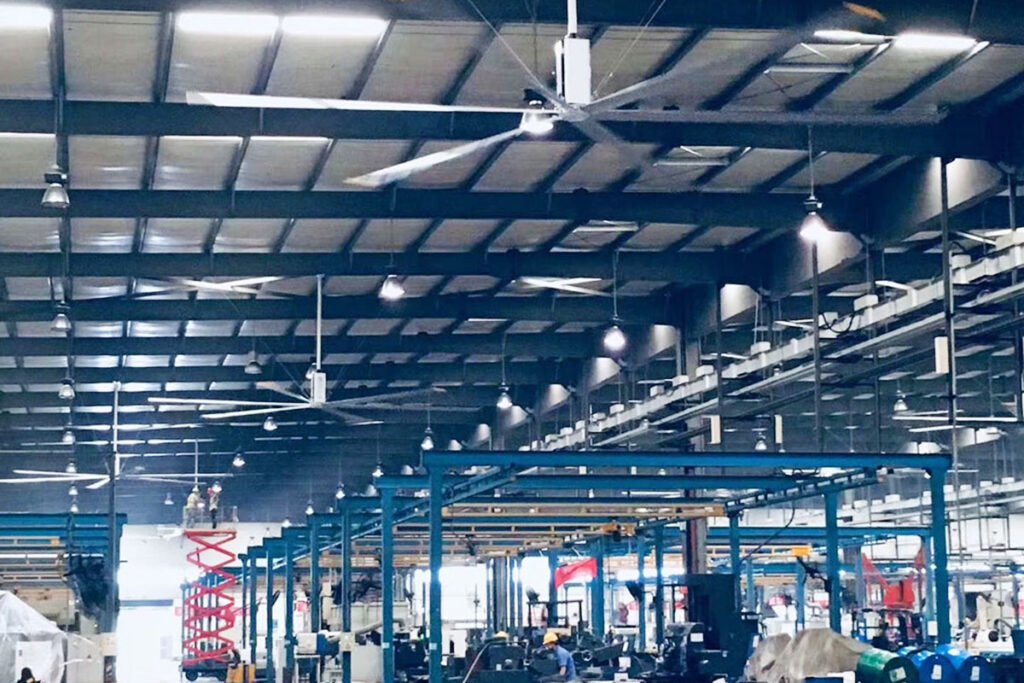
HVLS (High Volume, Low Speed) fans offer a distinct advantage over traditional fans in terms of energy efficiency due to their unique design and operational characteristics. Here’s a detailed comparison using the information from the provided sources:
Design and Airflow
- HVLS Fans: These fans are designed to move large volumes of air with slow-moving, large-diameter blades. The air column pushed downward encounters less friction, which allows for more air to be pushed outward when it reaches the floor. This results in a larger volume of moving air that effectively cools the skin, displaces odors and particulates, and evaporates moisture on surfaces more quickly.
- Traditional Fans: Traditional fans typically have smaller blades that move at higher speeds to generate airflow. This approach is less efficient as it requires more energy to achieve the same volume of air movement.
Energy Consumption
- HVLS Fans: HVLS fans are highly energy efficient due to their design. They require minimal electric power to move a large amount of air compared to several smaller fans. Proprietary blade designs, such as those developed by Hunter Fan in partnership with the aerospace industry, maximize air movement efficiency. The objective is to move the most air with the least energy.
- Traditional Fans: Traditional fans, especially older models, often consume more energy because they use high-speed motors that require more power to generate the same amount of airflow as an HVLS fan.
Cooling Effect and Comfort
- HVLS Fans: The air movement created by HVLS fans can make the perception of temperature drop by 7 to 12 degrees Fahrenheit, providing a cooling effect without significantly lowering the actual air temperature. This is particularly beneficial in environments where mechanical air conditioning is cost-prohibitive.
- Traditional Fans: Traditional fans may not provide the same level of cooling effect, especially in larger spaces, and may not be as efficient in reducing the perceived temperature.
Efficiency Ratings
- HVLS Fans: HVLS fans often have high airflow efficiency ratings, measured in cubic feet per minute per watt (CFM/Watt). A good HVLS fan should have a CFM/Watt ratio well above 100, indicating better efficiency.
- Traditional Fans: The efficiency of traditional fans can vary widely, but they generally have lower CFM/Watt ratios compared to HVLS fans.
Versatility and Applications
- HVLS Fans: The energy efficiency of HVLS fans makes them suitable for a wide range of applications, from industrial settings to large commercial spaces, where they can improve indoor air quality and reduce the risk of “sick building syndrome.”
- Traditional Fans: Traditional fans are more commonly used in residential and smaller commercial settings where the energy consumption is less critical, and the space does not require the same level of airflow coverage.
In summary, HVLS fans are significantly more energy efficient than traditional fans due to their ability to move large volumes of air using less energy. They provide a more comfortable environment in larger spaces and are a more sustainable choice for cooling large areas effectively and economically.
